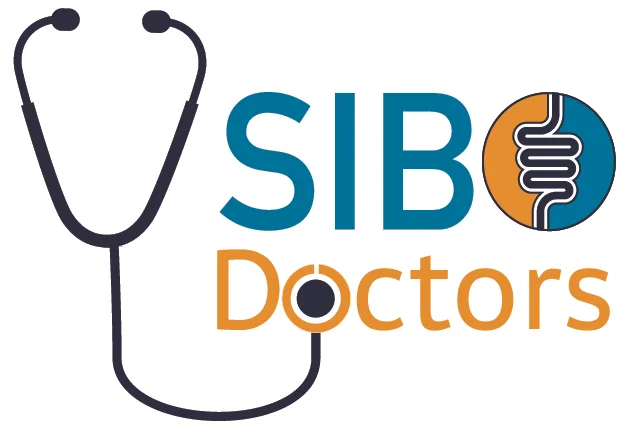SIBO & Food Poisoning or Traveler’s Diarrhea Connection
Statistics show that 15 to 20% of North Americans have the label of irritable bowel syndrome (IBS). Studies have shown that up to 84% of people given the label of IBS will test positive for SIBO. When you treat the SIBO, the prototypical IBS symptoms subside long term. For over a decade now, research and clinical experience has shown SIBO to be, by far, the #1 root cause of IBS symptoms. Therefore, if 1 in 5 people in North America have an "IBS picture" then almost 1 in 5 people have SIBO.
Why is the rate of SIBO so high? The answer lies in two very common ailments that the majority of us experiences – a case of food poisoning or traveler’s diarrhea. Both of these common ailments are caused by a bacterial infection of the gastrointestinal tract. The bacteria species that typically cause food poisoning or traveler’s diarrhea are specific types of E.coli, Shigella, Salmonella, Campylobacter jejuni, and/or Campylobacter coli. What all of these bacteria have in common is that they all produce a substance called cyto-lethal distending toxin (CDT). This toxin leads to DNA damage of specific cells within the gastrointestinal tract and seems to lead to increased virulence of the bacteria that has caused the food poisoning or traveler’s diarrhea.
For the majority of us, when we our gastrointestinal tract is exposed to CDT, our gut’s immune system produces an anti-CDT antibody and we begin to neutralize the toxin and start to recover from the infection. However, 1 in 5 of us will have an autoimmune cross-reaction and as we produce an anti-CDT antibody, we also produce an anti-vinculin antibody. This is a crucial finding, as vinculin is a protein that connects the Interstitial Cells of Cajal (ICC) together within the smooth muscle of the small intestines.
The ICC are electrical pace maker cells that initiate the migrating motor complex (MMC) via electrical stimulation. The MMC, specifically phase 3 of the MMC, is 10 – 20 minutes of high intensity and high frequency contractions of the smooth muscles of the gastrointestinal tract. The MMC triggers 3 hours after our last meal. Therefore, the body allows the meal to slowly move along the small intestines for about 3 hours, so the proteins, carbohydrates, and fats can be digested down into their smaller components for efficient absorption of nutrients. After 3 hours, the MMC is triggered by the ICC so that the remaining food substance from the meal is pushed into the large intestine as waste.
The MMC doesn't just sweep food waste into the large intestine, but it also sweeps the small intestines clean of bacteria every 3 – 4 hours throughout the day. This is how our body naturally keeps 98% of our gut bacteria in our large intestine and only 2% of our gut bacteria in our small intestines, therefore preventing SIBO.
If we are the 1 in 5 who produce an anti-vinculin antibody after a case of food poisoning or traveler’s diarrhea, our immune system ends up attacking the connections between the ICC. Because the ICC works as a electrical circuit, when the vinculin proteins are destroyed by our own immune cells, the MMC begins to become less and less effective, and eventually can not continue to sweep the small intestines clean of bacteria. Over time, bacteria can then over populate the small intestines, and SIBO is the result.
The majority of North Americans have had a case of food poisoning or traveler’s diarrhea. At a rate of 1 in 5 of us having an autoimmune cross reaction when these infections occur, it makes sense why close to 1 in 5 of North Americans have SIBO.
Conventional medicine has noticed this correlation of gastroenteritis and IBS and has now labeled many patients with “post-infectious IBS.” These cases are truly SIBO caused by a gastrointestinal infection.
Therefore, your IBS is not “just in your head” or only “caused by stress.” There is likely an autoimmune cause to the abdominal bloating, abdominal discomfort, gas production, heartburn, nausea, diarrhea, or constipation.
Determine if SIBO is behind your IBS today by seeking proper assessment from an experienced SIBO doctor.
References:
Beatty JK. Post-infectious irritable bowel syndrome: mechanistic insights into chronic disturbances following enteric infection. World J Gastroenterol. 2014 Apr 14;20(14):3976–3985.
Zanini B. Incidence of post-infectious irritable bowel syndrome and functional intestinal disorders following a water-borne viral gastroenteritis outbreak. Am J Gastroenterol. 2012 Jun;107(6):891–899.
Pokkunuri V. Role of cytolethal distending toxin in altered stool form and bowel phenotypes in a rat model of post-infectious irritable bowel syndrome. J Neurogastroenterol Motil. 2012 Oct;18(4):434–442.
Sung J et al Effect of repeated Campylobacter jejuni infection on gut flora and mucosal defense in a rat model of post infectious functional and microbial bowel changes. Neurogastroenterol Motil. 2013 Jun;25(6):529–537.
Pimentel M et al. Autoimmunity links vinculin to the pathophysiology of functional bowel changes following Campylobacter jejuni infection in a rat model. Dig Dis Sci. Epub 2014 Nov.

